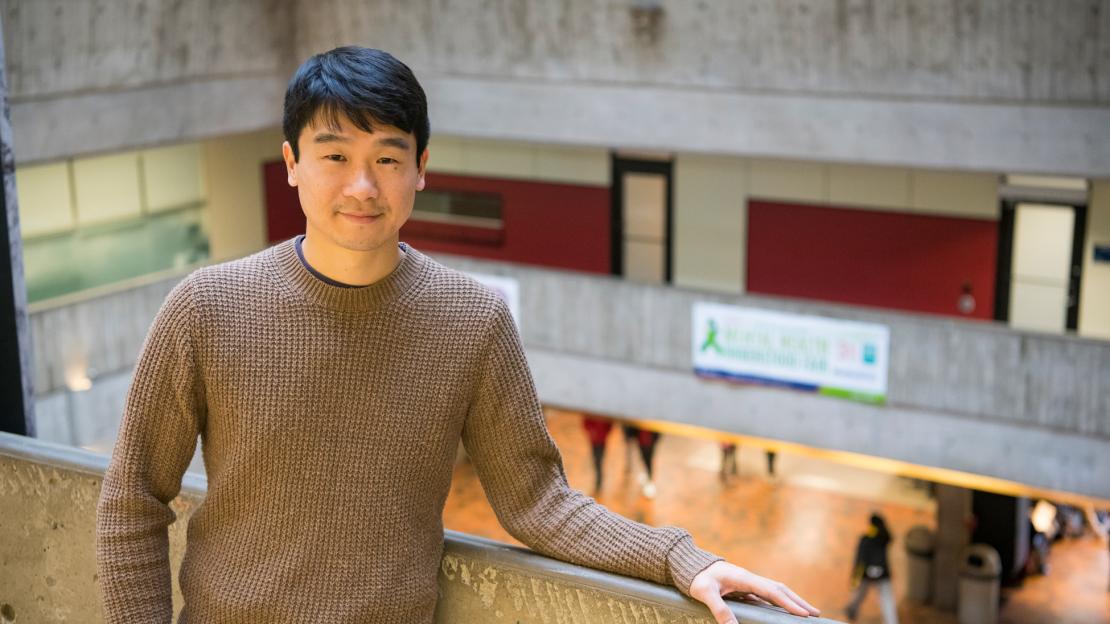Andy Lee’s research is working to unlock some of the important mysteries behind the brain’s centre for memory.
An associate professor in the Department of Psychology, Lee is a cognitive neuroscientist who uses neuroimaging techniques like fMRI and the study of patients with brain damage to explore the processes behind memory and how they interact with perception and decision-making.
His lab at U of T Scarborough focuses specifically on a group of structures in the brain called the medial temporal lobe, the most famous of which is the hippocampus, a structure traditionally linked to memory.
“When we think of a disease like Alzheimer’s, we traditionally think of the hippocampus,” says Lee.
But his current work is looking at what the medial temporal lobes are responsible for beyond memory, including the role it may play in perception, that is, how the brain perceives complex scenes and objects in the world around us.
One important question driving this work is whether the medial temporal lobe really cares about the type of information it receives.
“It’s not just whether it’s involved in memory, perception or decision-making, but the specific types of information involved in those processes,” he says. “Different structures may be involved depending on the type of information it receives, so we’re really interested in what exactly the medial temporal lobe is doing.”
Lee’s research will be supported by a $200,000 Discovery Grant, which will be paid out in instalments over five years by the Natural Sciences and Engineering Research Council of Canada (NSERC).
The grant will support fMRI studies on healthy subjects and patients to look at a range of medial temporal lobe processes, including how information about time is integrated into memory and how unnecessary information may interfere with information processing in this area of the brain.
“This may lead to things like memory interference or perceptual interference,” says Lee.
He adds the overall goal of the research is to gain a better fundamental understanding of what is going wrong cognitively in certain neurodegenerative diseases such as dementia and how they relate to abnormalities in the medial temporal lobe.
ALSO READ: THE MEMORY PART OF THE BRAIN MAY ALSO HOLD CLUES FOR ANXIETY AND DEPRESSION
Lee is one of 13 U of T Scarborough researchers – and 161 across U of T – who received funding from NSERC. In total, nearly 4,300 award recipients from across Canada received more than $558 million in research support.
“Canada supports science and our talented researchers,” says The Honourable Kirsty Duncan, Minister of Science and Sport, herself a former instructor at U of T Scarborough
“We are delivering on our historic investment in research and in the next generation of scientists. These remarkable researchers and students we are celebrating are working to make the world a better place and to secure a brighter future for all Canadians.”
In addition to 13 Discovery Grants, two U of T Scarborough researchers also received a research tools and instruments grant, while another received an accelerator grant. These grants total near $2.3 million in overall funding.
A list of the various NSERC award recipients from UTSC can be found below.
Discovery Grants
Scott James MacIvor, Biological Sciences, Bee diversity and pollination services in dynamic heterogeneous landscapes.
Ashton Anderson, Computer and Mathematical Sciences, Behavioural computation: Analysis, models, and algorithms for supporting human improvement on the web.
Qiang Sun, Computer and Mathematical Sciences, Modern statistical optimization, robustification and inference with applications to big data analytics.
Gennady Pekhimenko, Computer and Mathematical Sciences, Exploiting hardware heterogeneity for efficient execution of emerging applications.
Andrew Mason, Biological Sciences, Complex sensory signals: function and mechanism.
Mauricio Terebiznik, Biological Sciences, Phagocytosis of filamentous fungi by macrophages.
Sarah Bailey, Physical and Environmental Sciences, Examining risk of, and management strategies for, ship biofouling as a vector of aquatic nonindigenous species to Canada.
Bill Gough, Physical and Environmental Sciences, Climate change in the Eastern Arctic.
Artur Izmaylov, Physical and Environmental Sciences, Quantum-dynamical methods for modelling photo-induced processes in molecules.
Carl Mitchell, Physical and Environmental Sciences, Hydro-biogeochemistry of contaminant transformation and transport.
Vina Goghari, Psychology, Dissociating proactive and reactive cognitive control processes.
Andy Lee, Psychology, Exploring the content of human medial temporal lobe representations and their contributions to cognition.
Igor Averbakh, Management, Nonclassical discrete optimization problems.
Research Tools and Instruments Grants
Ruby Sullan, Physical and Environmental Sciences, Dynamic light scattering system for biological chemistry.
Maithe Arruda-Carvalho, Psychology, Circuit basis of decision making across the lifespan.
Discovery Accelerator Supplements
Gennady Pekhimenko, Computer and Mathematical Sciences, Exploiting hardware heterogeneity for efficient execution of emerging applications.
Mauricio Terebiznik, Biological Sciences, Phagocytosis of filamentous fungi by macrophages.
